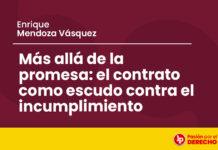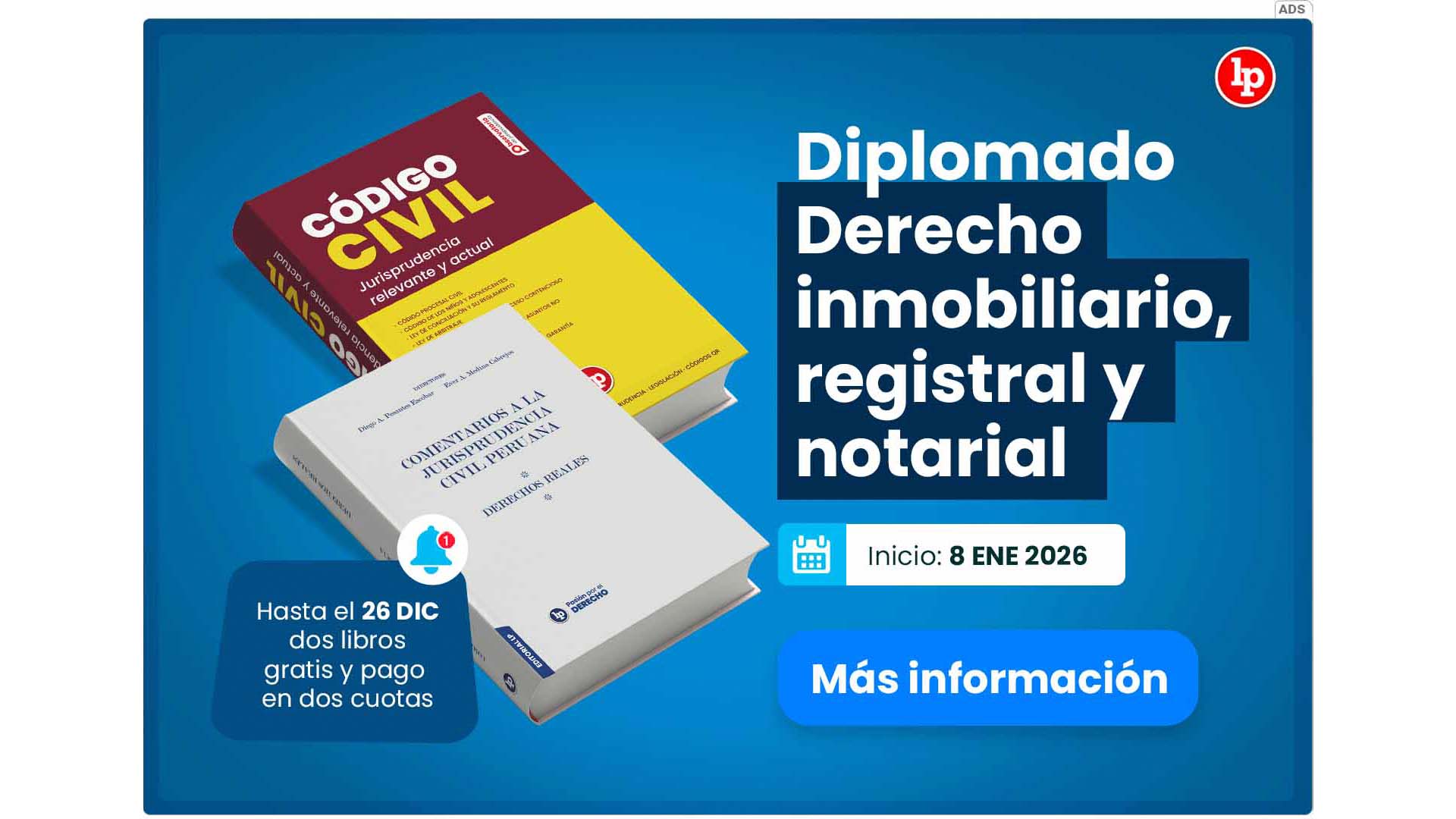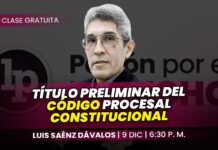Fundamentos destacados: 99. El Tribunal señala que las presentes solicitudes son únicas en el sentido de que no es la legalidad de los informes cuando fueron publicados por primera vez o su disponibilidad en los portales de Internet de los medios de comunicación en cuestión lo que los solicitantes ponen en duda, sino la posibilidad de acceso a estos informes mucho después y, en particular, a medida que se acerca la fecha prevista para su liberación de prisión. Por lo tanto, debe examinar la cuestión de si la puesta a disposición de los informes controvertidos siguió contribuyendo a un debate de interés general.
[…]
105. En la medida en que los demandantes subrayan que no piden que se eliminen los informes controvertidos, sino sólo que sus nombres ya no aparezcan en ellos, el Tribunal observa que la anonimización de un informe constituye ciertamente una medida que atenta menos contra la libertad de expresión. que una supresión de todo el informe (véase, mutatis mutandis , Times Newspapers Ltd (núms. 1 y 2) , antes citado, § 47). Sin embargo, recuerda que la forma en que se trata un tema es una cuestión de libertad periodística y que el artículo 10 del Convenio deja a los periodistas decidir qué detalles deben publicarse para garantizar la credibilidad de una publicación, siempre que las opciones que actúan a este respecto se basan en las normas éticas y de conducta profesional de su profesión (Satakunnan Markkinapörssi Oy y Satamedia Oy , antes citada, § 186). El Tribunal considera, al igual que los terceros medios de comunicación implicados, que la inclusión en un informe de elementos individualizados, como el nombre completo de la persona a la que se dirige, constituye un aspecto importante del trabajo de la prensa (Fuchsmann c. Alemania , n . 71233). /13 , § 37, 19 de octubre de 2017), y más aún cuando se trata de informes sobre procesos penales que han despertado un interés considerable. Concluye que, en el presente caso, la disponibilidad de los informes controvertidos en los sitios web de los medios de comunicación en el momento de la presentación de las solicitudes de los demandantes siempre contribuyó a un debate de interés general que el paso de algunos años no hizo no hacerlo desaparecer
[Traducción de LP]
99. The Court notes that the particular feature of the present applications is that the applicants are not calling into question the lawfulness of the reports when they first appeared or were made available on the Internet portals of the media outlets concerned, but rather the fact that those reports were accessible a long time afterwards and, in particular, as the date of the applicants’ expected release from prison approached. It must therefore examine whether the fact of making the reports in issue available continued to contribute to a debate of public interest.
[…]
105. In so far as the applicants stressed that they were not requesting that the impugned reports be deleted, but only that their names no longer appear in them, the Court notes that rendering a report anonymous is certainly less detrimental to freedom of expression than the deletion of an entire report (see, mutatis mutandis, Times Newspapers Ltd (nos. 1 and 2), cited above, § 47). However, it reiterates that the approach to covering a given subject is a matter of journalistic freedom and that Article 10 of the Convention leaves it to journalists to decide what details ought to be published in order to ensure an article’s credibility, provided that the choices which they make in that regard are based on their profession’s ethical rules and codes of conduct (see Satakunnan Markkinapörssi Oy and Satamedia Oy, cited above, § 186). The Court considers, like the third-party media outlets, that the inclusion in a report of individualised information such as the full name of the person concerned is an important aspect of the press’s work (see Fuchsmann v. Germany, no. 71233/13, § 37, 19 October 2017), especially when reporting on criminal proceedings that have attracted considerable interest. It concludes that, in the present case, the availability of the impugned reports on the media outlets’ websites at the time the applicants’ requests were lodged continued to contribute to a debate of public interest which had not been diminished by the passage of a number of years.
[Idioma original]
CASE OF M.L. AND W.W. v. GERMANY
(Applications nos. 60798/10 and 65599/10)
In the case of M.L. and W.W. v. Germany,
The European Court of Human Rights (Fifth Section), sitting as a Chamber composed of:
Erik Møse, President,
Angelika Nußberger,
Yonko Grozev,
Síofra O’Leary,
Mārtiņš Mits,
Gabriele Kucsko-Stadlmayer,
Lәtif Hüseynov, judges,
and Milan Blaško, Deputy Section Registrar,
Having deliberated in private on 5 June 2018,
Delivers the following judgment, which was adopted on that date:
PROCEDURE
1. The case originated in two applications (nos. 60798/10 and 65599/10) against the Federal Republic of Germany lodged with the Court under Article 34 of the Convention for the Protection of Human Rights and Fundamental Freedoms (“the Convention”) by two German nationals, M.L. (“the first applicant”) and W.W. (“the second applicant”), on 15 and 29 October 2010 respectively.
2. The applicants were represented by Mr Geipel, a lawyer practising in Munich. The German Government (“the Government”) were represented by one of their Agents, Ms K. Behr, of the Federal Ministry of Justice and Consumer Protection.
3. The applicants alleged a violation of Article 8 of the Convention on account of the decision of the Federal Court of Justice not to prohibit various media outlets from making available on the Internet old reports – or transcripts thereof – concerning the applicants’ criminal trial.
4. On 29 November 2012 the Government were given notice of the applications. The parties’ observations were received during the course of 2013.
5. The three media outlets concerned by the applicants’ requests, namely Spiegel online, Deutschlandradio and Mannheimer Morgen, were given leave to intervene in the written procedure in the form of a joint intervention (Article 36 § 2 of the Convention and Rule 44 § 3 of the Rules of Court).
THE FACTS
I. THE CIRCUMSTANCES OF THE CASE
6. The first and second applicants were born in 1953 and 1954 respectively. The first applicant lives in Munich and the second in Erding.
7. The applicants are half-brothers. On 21 May 1993, following a criminal trial based on circumstantial evidence, they were sentenced to life imprisonment for the 1991 murder of W.S, a very popular actor. They lodged an appeal on points of law which was dismissed in 1994. On 1 March 2000 the Federal Constitutional Court decided not to entertain their constitutional appeals (nos. 2 BvR 2017/94 and 2039/94) against the decisions of the criminal courts. An application to the Court lodged by the applicants concerning those proceedings (n°. 61180/00) was rejected on 7 November 2000 by a three-judge committee on the grounds that the applicants had not lodged their constitutional appeals in accordance with the procedural rules laid down by the Federal Constitutional Court Act (unpublished decision).
8. The applicants lodged several applications for the reopening (Wiederaufnahme) of the proceedings, the most recent of which was submitted in 2004 and rejected in 2005. In the context of those proceedings the applicants contacted the press, providing them with documents connected to the reopening proceedings and other unspecified documents.
9. The first and second applicants were released on probation in August 2007 and January 2008 respectively.
[Continúa…]



![Código Penal peruano [actualizado 2025]](https://img.lpderecho.pe/wp-content/uploads/2024/05/VENTA-CODIGO-PENAL-LPDERECHO-218x150.jpg)
![No se puede inferir que abogado pertenece a una organización terrorista porque se le encontraron documentos relativos a una medida cautelar dirigida a la CIDH por la detención de los miembros del MOVADEF, pues se trata de actos inequívocos de defensa técnica [Exp. 122-2014-0, f. j. 6.b]](https://img.lpderecho.pe/wp-content/uploads/2025/07/MAZO-BALANZA3-LPDERECHO-218x150.jpg)
![Anulan procedimiento disciplinario que suspendió al fiscal Rafael Vela Barba en sus funciones por vulnerarse el debido procedimiento [Exp. 06245-2023-0]](https://img.lpderecho.pe/wp-content/uploads/2024/03/Rafael-Vela-4-LPDerecho-218x150.jpg)
![Confirman prohibición de la eliminación indiscriminada de perros abandonados [Exp. 00291-2018-0]](https://img.lpderecho.pe/wp-content/uploads/2023/06/maltrato-animal-atropello-perrito-perro-momo-LPDerecho-218x150.png)
![El tiempo para una exposición de la defensa debe ser prudencial (no existen tiempos fijos) y se establece en función a la complejidad de la causa y a la carga procesal del órgano jurisdiccional [Queja 1825-2022, Puno]](https://img.lpderecho.pe/wp-content/uploads/2025/07/MAZO-JUEZ-DOCUMENTO-LPDERECHO-218x150.jpg)

![Ley Orgánica del Registro Nacional de Identificación y Estado Civil (Ley 26497) [actualizada 2025]](https://img.lpderecho.pe/wp-content/uploads/2025/05/Ley-organica-del-registro-nacional-de-identificacion-y-estado-civil1-LPDERECHO-218x150.jpg)















![¿Empleador puede modificar jornada laboral hasta convertirla en una de tiempo parcial? [Exp. 27773-2014-0-1801-JR-LA-02] entrevista de trabajo](https://img.lpderecho.pe/wp-content/uploads/2021/11/trabajador-jefe-empresa-entrevista-de-trabajo-contrato-memo-documento-laboral-LPDerecho-218x150.png)




![Actualizan el TUPA de Migraciones: Adultos mayores podrán obtener pasaporte sin cita previa [Resolución 000150-2025-Migraciones]](https://img.lpderecho.pe/wp-content/uploads/2024/10/FACHADA-MIGRACIONES-LPDERECHO-218x150.jpg)



![Código de Protección y Defensa del Consumidor (Ley 29571) [actualizado 2025] Codigo proteccion defensa consumidor - LPDercho](https://img.lpderecho.pe/wp-content/uploads/2024/05/Codigo-proteccion-defensa-consumidor-LPDercho-218x150.png)
![Decreto Legislativo del Notariado (Decreto Legislativo 1049) [actualizado 2025]](https://img.lpderecho.pe/wp-content/uploads/2025/10/DECRETO-LEGISLATIVO-NOTARIO-1049-2025-LPDERECHO-218x150.jpg)
![Ley General de Contrataciones Públicas [Ley 32069] (actualizada 2025)](https://img.lpderecho.pe/wp-content/uploads/2025/01/NUEVA-LEY-GENERAL-CONTRATACIONES-PUBLICAS-LPDERECHO-218x150.png)
![Ley Orgánica de Elecciones (Ley 26859) [actualizada 2025]](https://img.lpderecho.pe/wp-content/uploads/2025/05/Ley-organica-de-elecciones-LPDerecho-2025-218x150.jpg)






![[VÍDEO] ¿Quieres postular a la Fiscalía? Estas son las preguntas que hacen en las entrevistas](https://img.lpderecho.pe/wp-content/uploads/2021/10/postular-fiscalia-preguntas-entrevista-LP-218x150.jpg)



![EXP. N.° 0022-2009-PI/TC LIMA GONZALO TUANAMA TUANAMA Y MÁS DE 5000 CIUDADANOS SENTENCIA DEL TRIBUNAL CONSTITUCIONAL En Lima, a los 09 días del mes de junio de 2010, el Tribunal Constitucional en sesión de Pleno Jurisdiccional, con la asistencia de los magistrados Mesía Ramírez, Beaumont Callirgos, Vergara Gotelli, Landa Arroyo, Calle Hayen, Eto Cruz y Álvarez Miranda, pronuncia la siguiente sentencia con los fundamentos de voto de los magistrados Vergara Gotelli y Landa Arroyo, que se agregan. ASUNTO Demanda de Inconstitucionalidad interpuesta por Gonzalo Tuanama Tuanama, en representación de más de 5000 ciudadanos contra el Decreto Legislativo N.° 1089. DEMANDA Y CONTESTACIÓN a) Demanda contra el Decreto Legislativo N.° 1089, que regula el Régimen Temporal Extraordinario de Formalización y Titulación de Predios Rurales Con fecha 01 de julio de 2009, se interpone demanda de inconstitucionalidad contra el Decreto Legislativo N.° 1089, que regula el Régimen Temporal Extraordinario de Formalización y Titulación de Predios Rurales, publicada en el diario oficial El Peruano el 28 de junio de 2008. Los demandantes refieren que “'sin entrar al fondo del contenido de la norma”, ésta fue promulgada sin efectuar ninguna consulta previa e informada a los pueblos indígenas, tal como lo ordena el Convenio 169 de la Organización Internacional De Trabajo (OIT), afectándose con ello los derechos fundamentales de los pueblos Indígenas, como el derecho a la consulta previa y el derecho colectivo al territorio ancestral, establecidos en los artículos 6, 15, 17 del mencionado convenio. De igual forma, expresan que no se tomaron en cuenta los artículos 19, 30 y 32 de la Declaración de las Naciones Unidas sobre los Derechos de los Pueblos Indígenas (DNUDPI) aprobado por la Asamblea General de la Organización de Naciones Unidas. Alegan que con dicha norma se afectan otros derechos establecidos en el Convenio N.° 169, como el derecho sobre las tierras de los pueblos indígenas (artículos 13 al 19), en el considerando que no se tomaron en cuenta medida que garanticen la protección de sus derechos de propiedad y posesión. Refieren que se afecta también el derecho a la libre determinación de las comunidades nativas, previsto en el artículo 17 del Convenio, que declara el respeto de sus formas tradicionales de transmisión de sus territorios. Por último, alegan que se estaría vulnerando lo previsto en el artículo 19 del Convenio en cuanto se afecta el derecho al desarrollo de políticas agrarias adecuadas para los pueblos indígenas. [Continúa...] Descargue la resolución aquí](https://img.lpderecho.pe/wp-content/uploads/2023/01/Logo-LP-con-fondo-guinda-LPDERECHO-1068x561.png)



![Para la determinación de la pena es obligatorio considerar la condición cultural de aimara del imputado —en aplicación del Convenio 169 de la OIT— (caso Walter Aduviri) [Casación 274-2020, Puno, f. j. 12]](https://img.lpderecho.pe/wp-content/uploads/2025/10/MAZO-LIBROS-BIBLIOTECA-LPDERECHO-218x150.jpg)
![Sujeto que declara sus ingresos por explotación de imagen, pero no los tributa al interpretar erróneamente que dicha obligación correspondía a su empleador, evidencia la ausencia de ánimo defraudatorio (caso Xabi Alonso) [STSJ CAT 4320/2023, f. j. 5.4.1]](https://img.lpderecho.pe/wp-content/uploads/2025/10/MAZO-JUEZ-SENTENCIA-PENAL-LPDERECHO-218x150.jpg)
![Corte IDH: Prohibición de imprescriptibilidad de la acción penal de los crímenes de lesa humanidad es una norma imperativa de derecho internacional («ius cogens») que no admite pacto en contrario [Almonacid Arellano y otros vs. Chile, ff. jj. 99, 152]](https://img.lpderecho.pe/wp-content/uploads/2022/08/Corte-interamericana-de-derechos-humanos2-LPDerecho-218x150.png)
![TEDH: Obligación de aturdir a los animales antes del sacrificio ritual es un objetivo legítimo de protección del bienestar animal vinculado a la moral pública [Ejecutivo de los Musulmanes de Bélgica y otros vs. Bélgica, ff. jj. 95, 118]](https://img.lpderecho.pe/wp-content/uploads/2025/09/ATURDIR-SACRIFICIO-BIENESTAR-ANIMAL-LPDERECHO-218x150.jpg)
![Anuncio comercial que explota la miseria de los enfermos de sida como objeto de atracción para beneficio de la empresa viola la dignidad humana; un llamamiento a la solidaridad con las personas necesitadas es cínico (Alemania) [1 BvR 426/02, ff. jj. 25-27]](https://img.lpderecho.pe/wp-content/uploads/2025/09/ANUNCIO-COMERCIAL-ENFERMOS-ALEMANIA-LPDERECHO-218x150.jpg)
![Anulan procedimiento disciplinario que suspendió al fiscal Rafael Vela Barba en sus funciones por vulnerarse el debido procedimiento [Exp. 06245-2023-0]](https://img.lpderecho.pe/wp-content/uploads/2024/03/Rafael-Vela-4-LPDerecho-324x160.jpg)
![Confirman prohibición de la eliminación indiscriminada de perros abandonados [Exp. 00291-2018-0]](https://img.lpderecho.pe/wp-content/uploads/2023/06/maltrato-animal-atropello-perrito-perro-momo-LPDerecho-100x70.png)
![Código Penal peruano [actualizado 2025]](https://img.lpderecho.pe/wp-content/uploads/2024/05/VENTA-CODIGO-PENAL-LPDERECHO-100x70.jpg)

![Código Civil peruano [actualizado 2025]](https://img.lpderecho.pe/wp-content/uploads/2024/05/VENTA-OFICIAL-CODIGO-CIVIL-2024-LPDERECHO-100x70.jpg)

![Actualizan el TUPA de Migraciones: Adultos mayores podrán obtener pasaporte sin cita previa [Resolución 000150-2025-Migraciones]](https://img.lpderecho.pe/wp-content/uploads/2024/10/FACHADA-MIGRACIONES-LPDERECHO-100x70.jpg)



![Anulan procedimiento disciplinario que suspendió al fiscal Rafael Vela Barba en sus funciones por vulnerarse el debido procedimiento [Exp. 06245-2023-0]](https://img.lpderecho.pe/wp-content/uploads/2024/03/Rafael-Vela-4-LPDerecho-100x70.jpg)





![Los animales son sujetos de derechos que deben tener derechos fundamentales de acuerdo con el grado evolutivo que tienen; les asiste, entre otros, el derecho a nacer, crecer y morir en su medio según su especie (caso Chimpancé Cecilia) (Argentina) [Exp. P-72.254/15, f. j. IV.c]](https://img.lpderecho.pe/wp-content/uploads/2023/01/Logo-LP-con-fondo-guinda-LPDERECHO-324x160.png)